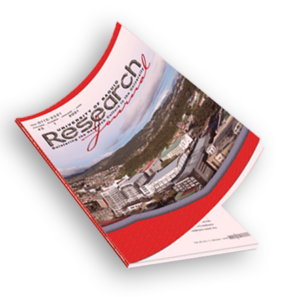
Reading performance of the intermediate grade pupils of the University of Baguio Laboratory Elementary School
ABSTRACT
This descriptive-quantitative study described the level of reading comprehension of the intermediate pupils of the University of Baguio Laboratory Elementary School (UBLES). This study made use of the Philippine Informal Reading Inventory (Phil-IRI). Phil-IRI is an informal reading inventory composed of graded passages designed to determine the individual student’s performance in oral reading, silent reading, and listening comprehension. A total of 154 Grades five and six pupils enrolled for the school year 2019-2020 participated in the study. The data were analyzed through the use of SPSS to come up with the frequencies, percentages, weighted means, correlation, and ANOVA. Results revealed that the pupils attained an instructional level of oral reading performance in Filipino, and Grade 6 pupils’ level of performance in oral reading is higher than the Grade 5 pupils. It was also found that the pupils who speak Ilocano have independent level on oral reading. When it comes to the oral reading performance according to language spoken at home, there is no significant difference between English and Filipino and Filipino and Ilocano. However, there is a significant difference in English and Ilocano. The results further showed that the pupils gained frustration level in silent reading performance in Filipino. The Grade 5 learners are more efficient in reading silently than the Grade 6 pupils. The pupils who speak Filipino have the highest comprehension percentage in silent reading with a frustration level. There is no significant difference on the reading performance of the pupils in silent reading in Filipino according to language spoken at home. Pearson correlation showed that there is no significant relationship between oral and silent reading since p=.858, therefore the pupils’ performance in oral and silent reading is not highly correlated.
Authors
Alicia D. Viduya1 and Jenneth B. Antonio2
1Faculty, University of Baguio Laboratory Elementary School
Baguio City, Philippines
ORCID ID: https://orcid.org/0000-0001-6606-2026
Email: [email protected]
2 Librarian, University of Baguio
Baguio City Philippines
Keywords
Reading comprehension, oral reading, silent reading, reading programs, reading intervention
Issue
University of Baguio Research Journal
Vol. 44, No. 2 | July – December 2020
Published
- January 12, 2022
ISSN Information
(online) ISSN 2945-3321
This work is licensed under
CC BY-NC-ND 4.0

In this issue
Contact Us
- [email protected]
- [email protected]
- (074) 442-3036
- 77 General Luna Road, Baguio City Philippines 2600
